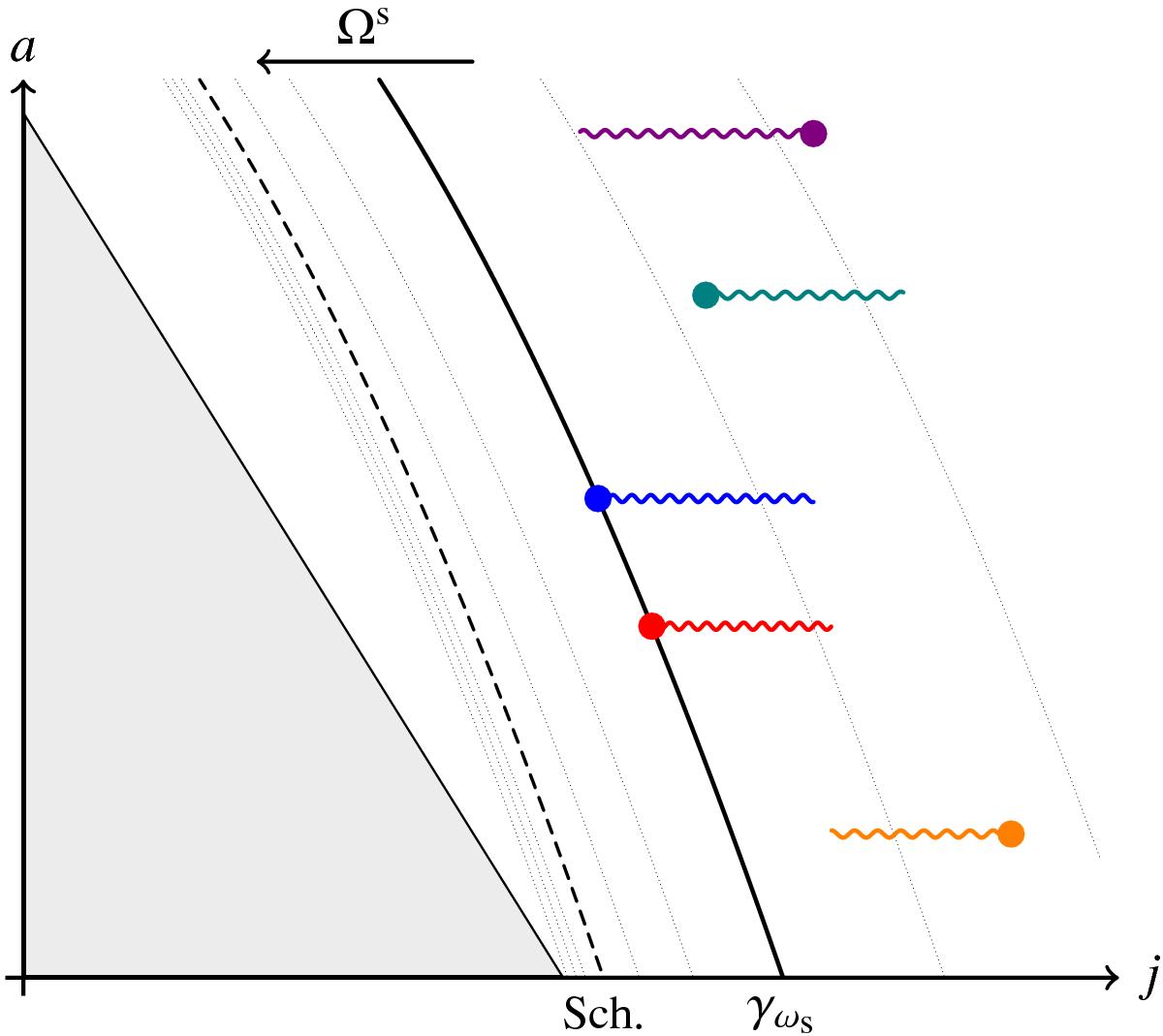Fig. 3

Illustration of the individual dynamics of stars in the (j,a) = (L/I,I2/GM•) space, as given by the Langevin Eq. (114). The grey region corresponds to the capture region, within which stars inevitably sink into the BH. As I is an invariant of the diffusion (see Eq. (114)), stars’ diffusion is one-dimensional, conserves a, and occurs only in the j-direction. The background dotted curves illustrate the contour lines of the precession frequency given by the function (j,a) → Ωs(j,a). As illustrated in Fig. 2, the precession frequencies get larger as particles approach the central BH, due to the contributions from the relativistic precession frequencies. The blue and red orbits precess at the same frequency ωs, so that they belong to the same critical resonant line γωs, which allows them to resonate one with another. As the precession frequencies diverge in the vicinity of the BH, such resonant couplings are significantly less likely as stars get closer to the BH, which effectively creates a diffusion barrier in action space, the so-called Schwarzschild barrier.
Current usage metrics show cumulative count of Article Views (full-text article views including HTML views, PDF and ePub downloads, according to the available data) and Abstracts Views on Vision4Press platform.
Data correspond to usage on the plateform after 2015. The current usage metrics is available 48-96 hours after online publication and is updated daily on week days.
Initial download of the metrics may take a while.


